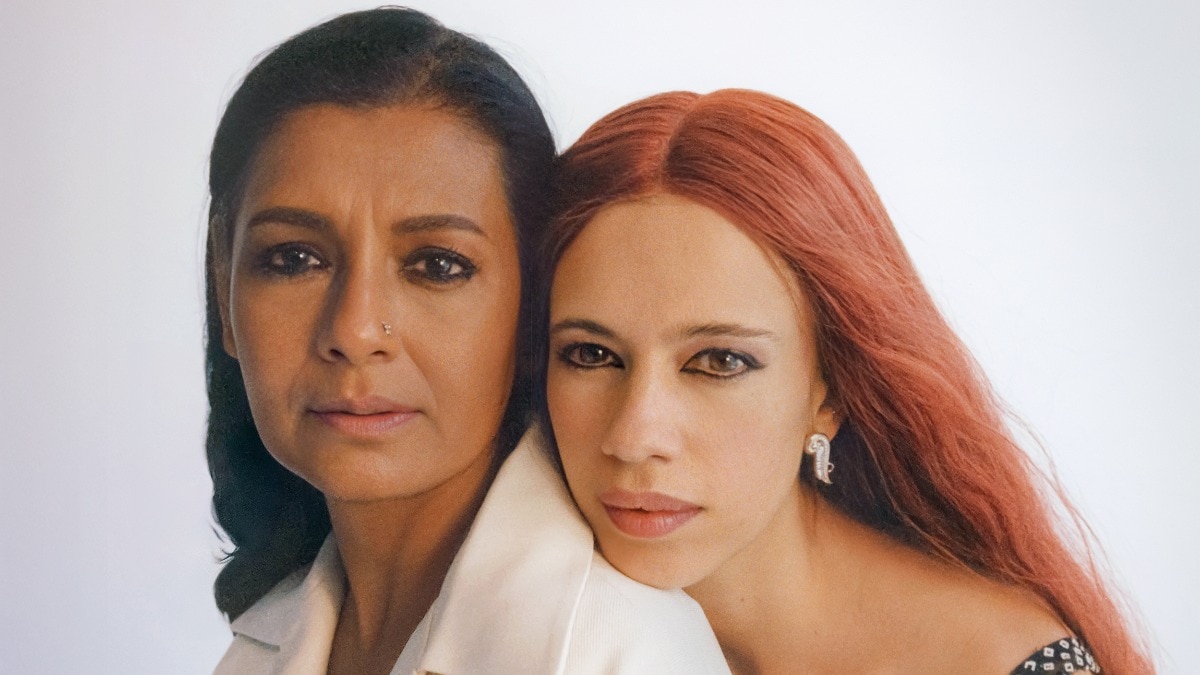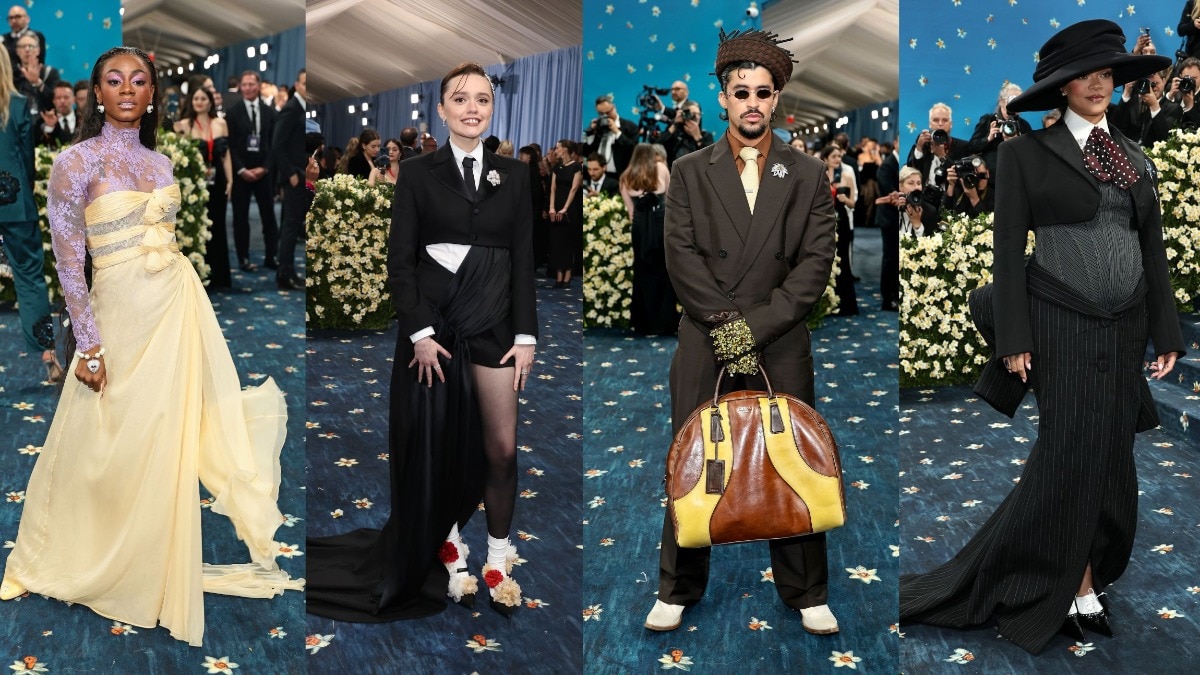The scariest horror movies of all time
No, really—these films aren’t messing around.


We acknowledge the arbitrary nature of a round-up of this ilk. That said, we can vouch that the following films—classics still terrifying today, modern tales as horrifying as they are original, and foreign fare so spooky you'll be glad you have those subtitles to focus on—leave permanent scars.
Barbarian (2022)
Justin Long, the quietly brilliant genre actor celebrated by indie fans for his surprising performances in projects like Tusk, The Wave, House of Darkness, and Creepshow, gets punished again in this wickedly fun viral gem from Zach Cregger. The film’s primo star, however, is final girl Georgina Campbell, the actress who plays Tess. As a woman who’s booked the world’s most disturbing Airbnb, she comes toe to toe with monsters both real and imagined. And the results are nerve shattering.
Speak No Evil (2022)
Good manners are essential in social situations. But just how much is one willing to politely take? That’s the question posed to Bjorn and Louise, the couple at the core of Christian Tafrup’s Danish slow burner. And the answer? Well, it’s far more sinister than you could ever imagine. After meeting another couple on holiday in Tuscany, Bjorn and Louise agree to spend a weekend with their new “friends” at their home in the country. Slowly and methodically, the reason for the invite becomes excruciatingly clear.
The Call (2020)
A Netflix original, The Call is a twisty take on the slasher genre that juxtaposes its modern storytelling with a relic from the olden days: the house phone. Told through two different timelines, 1999 and 2019, Chung-Hyun Lee’s puzzler unfolds through two women who develop a friendship over a series of phone calls. Of course, all time-travelling narratives come with their own butterfly effects, and The Call is no different. Where this one diverts from the status quo, however, is in its consequences: Each is more shocking than the last.
Night of the Living Dead (1968)
We have George A Romero to thank for the undying zombie subgenre that has infected all walks of entertainment. So much more than just a movie about virus-infected flesh-eaters, his low-budget 1968 classic is a comment on social themes, including race, which he satirises to brilliant effect. About a group of friends who ride out the zombie apocalypse in a farmhouse in Pennsylvania, Night of the Living Dead is the social critique that launched a thousand more. Oh, and it’s mother-effing scary too.
Psycho (1960)
What’s a horror round-up without a little Alfred Hitchcock? Pored over by film students and Hitchcock fans alike, Psycho breaks the rules of the genre while writing all-new guidelines of its own. Assuming that we’re operating under the notion that a spoiler alert isn’t necessary when chatting about this 1960 classic, we’ll continue: Killing off his scream queen, Janet Leigh, in the first half of the film, the master of suspense delivers essentially two stories in one—a mini double feature that belongs not to either pretty blonde lead, but rather Norman Bates, a grisly knockoff of Ed Gein and the reclusive hotel manager who wields a very sharp knife.
The Shining (1980)
Not only does director Stanley Kubrick cripple the senses with effects and imagery (even if you haven't seen the movie, you know the corridor of blood-gushing nightmares), but he also weaves a tale so rich in symbolism it’s still picked apart today, and so skewed in perception that by the time it’s over, you—like our dull boy—have gone completely mad.
Paranormal Activity (2007)
You’ve seen Oren Peli’s security-cam horror a hundred times—and a hundred more with your eyes closed. But no matter the viewing volume, the preliminary possession that launched a paranormal franchise still leaves a mark. In the very first film, we’re introduced to Katie and Micah, the couple who catch the deeply frightening things happening in their home on security footage.
Train to Busan (2016)
The great thing about horror: Just when you think a subgenre’s dead, there’s always a brilliant new entry that zaps fresh, new life back into it. And that’s exactly what happened when South Korean director Sang-ho Yeon unleashed his zombie epic, Train to Busan, on audiences who only thought they’d had their fill of the undead. An unrelenting and action-packed pulse-raiser that focuses on a father and daughter who board a train just as the apocalypse begins, it takes more of the Danny Boyle-style approach to its virally infected, rather than, say, George A Romero. Read: There are no slow staggers here; zombies be in full-on torque mode. And they don’t let up for nearly two hours. Look for the American remake coming soon.
A Nightmare on Elm Street (1984)
Anyone who grew up in the ‘80s while Wes Craven was unleashing installments of Freddy Krueger mayhem the way Willy Wonka’s Candy Man doles out sweet treats will understand why this nightmare lives not on Elm Street but in the back corners of our mind—forever burned into our psyche. In the franchise opener, we’re introduced to the sardonic villain, and the group of teenagers on his to-kill list.
The Ring (2002)
Seven days. That’s how long the goners in Gore Verbinski’s Ring have to wait to die after watching a certain possessed videotape. And even though the cinema of the unsettling images are captured on a medium as outdated as the newspaper, Verbinski’s atmospheric flourishes and scream queen Naomi Watts’s chilling performance cement this Japanese horror adaptation as one of the genre’s greats.
The Exorcist (1973)
There’s a reason theatergoers were leaving on stretchers when William Friedkin unleashed his hellion on humanity, and it’s the same reason we become quivering, scripture-spewing shadows of our former selves after spending some time with Regan and all that is unholy: you simply can’t unsee any of it.
Goodnight Mommy (2014)
Before Austrian auteurs Severin Fiala and Veronika Franz gave us cabin fever with The Lodge, they were sending chills up and down and all around our spines with Goodnight Mommy. Atmospheric and primal, it’s a familial horror about a mother and her twin boys: She’s just had reconstructive surgery on her face, and they simply don’t recognise her. So they take her hostage, demanding to know what this “alien” has done with their real mother. What happens over the next the next 99 minutes is a visceral experience that is not limited to fire, torture, cockroaches, and creep-show special effects. Good times.
Saw (2004)
During a post-film screening Q&A back in 2010 that this writer attended, James Wan self-deprecatingly likened his early-career cult feature Saw to a “student film.” But we beg to differ. There is nothing amateur about the twisted and gruesome sequence of events on display in the horror film that took the torture porn subgenre from low-hanging exploitation to masterful storytelling in the 2000s. About so much more than just the two men who awake to abduction hell, it also has one of the best surprise endings known to horror cinema.
Ringu (1998)
In 1998, Hideo Nakata left Japanese audiences completely traumatised with Ringu, a new-wave horror flick about a vengeful ghost who uses technology as a portal to kill. His marvel, which became the poster movie for the J-Horror boom of the ’90s and 2000s, had an effect over here in the States as well, reigniting Western interest in a genre that was stuck in a slump. Without its influence, we wouldn’t have some of the most iconic American horror movies to date—The Ring, The Grudge, Dark Water. So if you haven’t yet tried Ringu on for size, now’s as good a time as any.
The Conjuring (2013)
A director who somehow has convinced audiences that supernatural torture is a favourite pastime, James Wan has truly earned his stripes as a master of horror. Perfecting his craft over nerve-shattering gems including Saw, Insidious, and, of course, the entire Conjuring franchise, Wan steers clear of special effects and instead leans into myriad visuals, creepy close-ups, and effective storytelling to elicit scares. The Conjuring, Wan’s initial foray into the paranormal activity inhabiting the world of real-life ghostbusters Lorraine and Ed Warren, just might be the auteur’s best.
This piece originally appeared in Harper's Bazaar US










